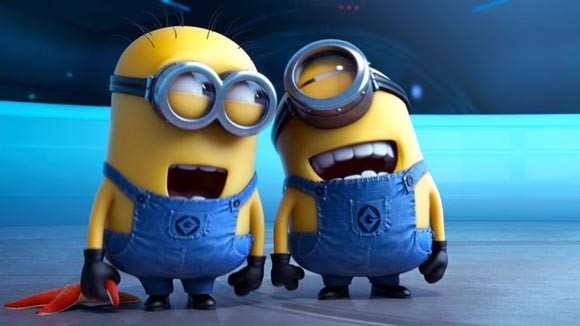

‘LA Times’ Writer Stupidly Suggests That Hollywood is Making Too Many Animated Films
Well, it’s that time of year again. A couple animated films perform below-average at the box office and the mainstream media begins asking, “Are Hollywood studios cranking out too many animated films?”
The article is filled with alarmist descriptions of the film animation industry, like “a flood of computer-animated movies” (because five films apparently constitutes a ‘flood’) and eye-roll worthy quotes like this one from DreamWorks CEO Jeffrey Katzenberg:
“We’ve never experienced this level of animation congestion in a period of time.”
and this gem from Illumination chief executive Chris Meledandri:
“[A]s more films are planned, it’s inevitable that there will be more acute cannibalization of each other.”
Cannibalization? Let’s get a grip, here. There are only eleven major animated releases planned for this year. That’s compared to hundreds of live-action releases. How is it that the feature film market can support hundreds of live-action films but less than a dozen animated pics?
The problem isn’t that there are too many animated films; the problem is that every single animated release is targeted at the same family demographic.
Yes, there were five animated releases this summer in the span of a couple months. That’s hardly newsworthy considering that there were dozens of live-action releases in the same period. The issue is that all five of those films were targeted to the exact same audience. I suffered through a couple of them, and if you have an intellectual capacity beyond a seven-year-old’s, chances are you’re going to want to watch something more stimulating.
A far more illuminating article would have been to ask why film executives ghettoize the animation art form and refuse to cater to a broader range of audiences, as animated filmmakers in Europe and Asia routinely do. Hayao Miyazaki’s controversial new animated feature The Wind Rises is geared toward adult audiences, and has not only been the number one film in Japan for the past month, but will likely become Japan’s number one film at the box office for all of 2013.
The writer of the LA Times article, Richard Verrier, who should know better considering that he covers the film industry for a living, erroneously refers to animation as a genre in his piece on multiple occasions. But, as we’ve discussed many times before, animation is NOT a genre. It may be perceived as a genre by Hollywood execs, but animation is as much a genre as live-action is.
To quote the animation industry’s patron saint of common sense, Brad Bird:
I think that there is more misreading of trends in animation than any other of the film community. If Cool World fails, then all adult-themed animation is doomed. And if Disney fails, all of animation is doomed. And it’s not like, “Well, hey, man, you know, maybe people are tired of five songs and a familiar story.” … That’s like if George Lucas hit a rough patch, somebody would suddenly say, “Well, people are tired of science fiction.” It’s ridiculous! It’s the kind of idiotic statement that never seems to go out of style in Hollywood… Animation is not a genre. It is a method of storytelling. People are constantly analyzing it and misanalysing it as if it is a genre. It isn’t a genre. It can do horror films, it can do adult comedies if it wanted to, it could do fairy tales, it could do science fiction, it could do musicals, it could mystery, it can do anything. Because Disney has been the only one that’s lavished any care on it, people [then] think it’s the only kind that can be told successfully.
And even if you want to lump all animation as a genre, the argument is still flimsy and incorrect. How is there a glut when two of the top four films at the American box office are animated this year:
- Iron Man 3 / $408,195,474
- Despicable Me 2 / $346,642,075
- Man of Steel / $289,694,329
- Monsters University / $261,134,998
- Fast & Furious 6 / $238,464,720
On top of that, Despicable Me 2 is the single most profitable film in the history of Universal. The financials alone would suggest that the success rate in animation is far higher than live-action’s hit rate. Perhaps then, the writers of the LA Times should be exploring whether there’s a glut of live-action films in Hollywood.

